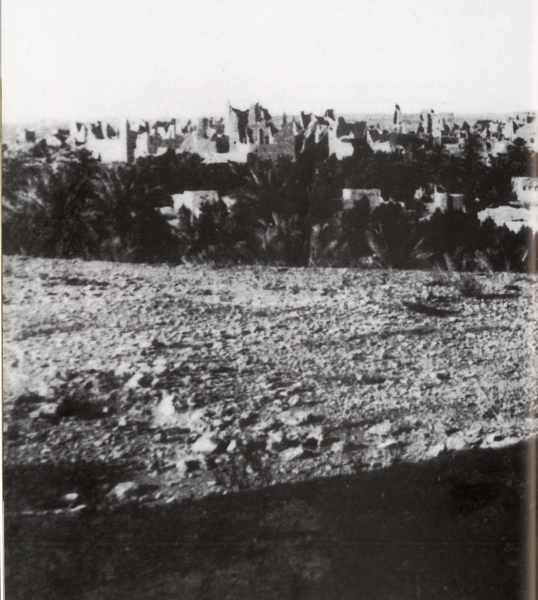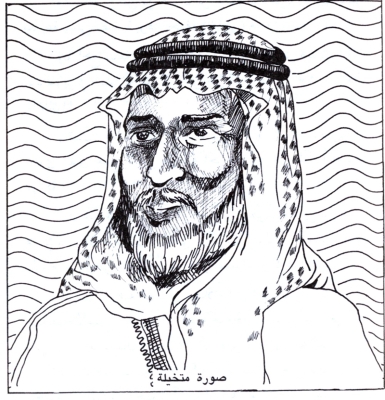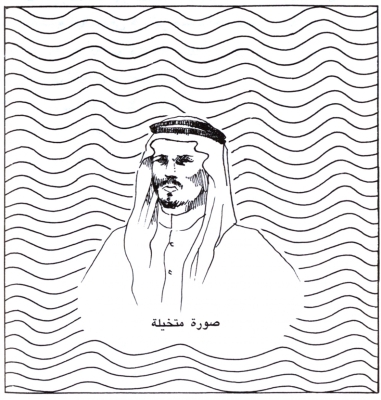

Mohammed al-Abdullah al-Qadi (1809-1868) was a Saudi poet and astronomer, one of the poets of Najd during the First and Second Saudi States. He was known as "The Great Poet of Najd" and wrote in various poetic themes. He gained recognition for his astronomical poem, in which he detailed constellations and star phases.
Life of Mohammed al-Abdullah al-Qadi
Mohammed al-Abdullah al-Qadi traces his lineage to al-Qadi family in Unaizah. Their surname dates back to the sixteenth century when their ancestor, historian, and genealogist Mohammed Bin Ahmed Bin Munif, was appointed as a judge in Aliyat Najd, covering al-Washm region up to the town of al-Shu‘ara in 1578. He then became known as "al-Qadi" (The Judge).
He memorized the Quran and studied religious sciences, literature, and history. He mastered Nabati poetry, composing extensively and excelling in it. His broad knowledge and cultural awareness were evident in many of his poems, which reflected religious themes, historical insights, and literary references that showcased his familiarity with literary heritage across different eras. Additionally, his expertise in astronomy and deep understanding of weather patterns, star phases, and their impact on climate and agriculture set him apart from his contemporaries among Nabati poets.
Poetry of Mohammed al-Abdullah al-Qadi
Mohammed al-Abdullah al-Qadi composed poetry in various genres, including Ghazal (expression of love poetry), descriptive poetry, praise, elegy, fraternal poetry (poems exchanged between friends), proverbs, wisdom, and reflections on people's lives and human nature. Early in his life, he was primarily a romantic poet, but in his later years, wisdom became the dominant theme of his poetry. His poetry collection was published four times. It was first published in full in 1952 in the second volume of Diwan al-Nabati by Khalid al-Faraj. It was later published separately in the sixth volume of Silsilat al-Azhar al-Nadiya (The Fresh Flowers Series of Bedouin Poetry) by Mohammed Saeed Kamal. Abdulaziz Bin Abdullah al-Sulayman reprinted the second volume of Diwan al-Nabati in the late 1970s, and Abdullah al-Hatem published it independently in 1984.
Mohammed al-Abdullah al-Qadi’s Interest in astronomy
Mohammed al-Abdullah al-Qadi had a deep interest in astronomy and possessed precise knowledge of the subject, which he expressed in an astronomical poem detailing star phases and constellations. He meticulously organized them in chronological order and did not limit himself to their common names but also mentioned their classical Arabic names. He provided detailed descriptions of the stars, making it easier for readers to identify them. Additionally, he recorded the rising times of the stars, their duration, the length of a person’s shadow during each season, and the agricultural and medicinal practices suitable for each phase. He also noted the expected weather conditions, including heat, cold, winds, and rainfall, beginning his astronomical account with the stars of the summer season.
In the opening lines of his astronomical poem, al-Qadi writes:
Sabk Nujum al-Dahr bil-Fikr Hatheq (A wise mind has crafted the stars of time),
Hawa wa-Ikhtasar Madmuneha bi-Amr Khaleq (Encompassing and summarizing their essence by the Creator’s command).
Tara Awal Nujum al-Qaydh Sabe' Rasayef (The first of the summer stars are seven aligned),
Kama Jayb Wadihan Daya' al-Dark Daleq (Like the radiant gap of dawn, scattering the searcher's path).
Related quizzes
Related articles

